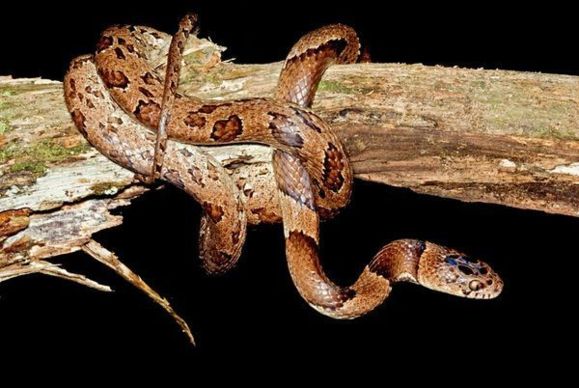
They found two sea snakes with the same name on the label, which had been there since being sent to Denmark by collectors in the 1800s.
"But they looked different and didn't seem to belong to the same group of snakes," Johan Elmberg said in the statement from Kristianstad University in southern Sweden.
"After comparing the sea snakes with other similar species in other museums in Europe it was even more obvious that we had found a new distinct sea snake," he said.
The Mosaic sea snake, scientifically known as Aipysurus mosaicus, is named after its unusually patterned skin, which looks like a Roman floor mosaic.
It "never goes ashore and now that its identity is known it is apparent that it is relatively common in the sea in northern Australia and southern New Guinea," Elmberg said.
He said the presence of sea snakes was a good sign.
"Sea snakes are a good indicator of how the coral reefs and other precious ecosystems are doing. If there are snakes left in the environment it shows that the reefs are healthy and intact," he explained.
Unlike some other sea snakes which have strong venom, the Mosaic sea snake is "virtually harmless," Elmberg said, adding that the species is unusual in that it feeds on fish eggs, and therefore has only very small fangs.
Until now, the snake was thought to be a variation of a species called Aipysurus eydouxii. But molecular analysis showed the two were sister species distinct from one another.
--------------------------------------------------------------------------------------------------
"But they looked different and didn't seem to belong to the same group of snakes," Johan Elmberg said in the statement from Kristianstad University in southern Sweden.
"After comparing the sea snakes with other similar species in other museums in Europe it was even more obvious that we had found a new distinct sea snake," he said.
The Mosaic sea snake, scientifically known as Aipysurus mosaicus, is named after its unusually patterned skin, which looks like a Roman floor mosaic.
It "never goes ashore and now that its identity is known it is apparent that it is relatively common in the sea in northern Australia and southern New Guinea," Elmberg said.
He said the presence of sea snakes was a good sign.
"Sea snakes are a good indicator of how the coral reefs and other precious ecosystems are doing. If there are snakes left in the environment it shows that the reefs are healthy and intact," he explained.
Unlike some other sea snakes which have strong venom, the Mosaic sea snake is "virtually harmless," Elmberg said, adding that the species is unusual in that it feeds on fish eggs, and therefore has only very small fangs.
Until now, the snake was thought to be a variation of a species called Aipysurus eydouxii. But molecular analysis showed the two were sister species distinct from one another.
--------------------------------------------------------------------------------------------------









 Home
Home Politics
Politics









